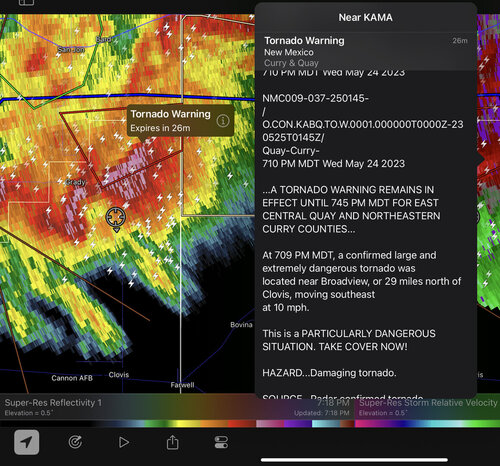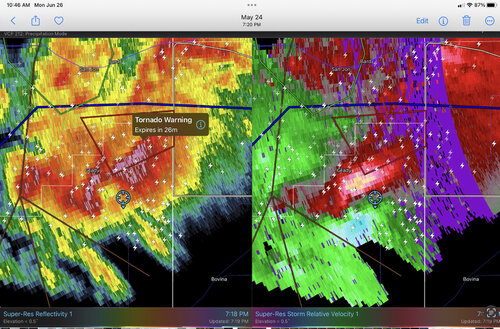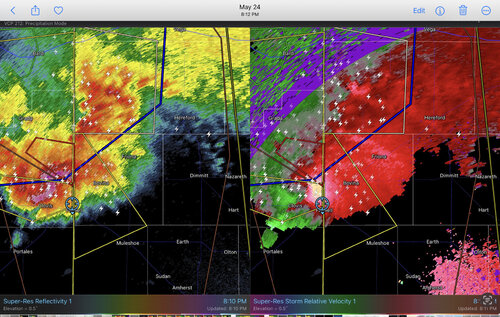Warren Faidley
Supporter
Looking at the radar now, I hope they listened. Tornado outbreak in progress.
This is happening more and more across the nation. I strongly salute the TV mets who are doing this.WDRB now advising people near the path of this storm (and a second one back over near French Lick) to take their tornado precautions, despite the absence of a NWS tornado warning.
View attachment 24045



I wonder if current weather patterns producing fewer tornadoes is also contributing to the problem? Depending on shifts, it's conceivable a NWS meteorologist could only issue a tornado warning maybe once or twice a year, if even that.
Jim, I had been watching the Indiana storm in question. It was in the polygon and moved out. If they didn't want to continue that tornado warning, that's fine (I disagreed) but then the polygon should be cancelled.
With regard to the above image, let me convey a thought: While the public would have the meso discussion turned off, look at that. How is the public supposed to make sense of all of the overlapping polygons and lines? The NWS is supposed to cancel invalid warnings. Instead we get these messy images that, I contend, fail to communicate the location of the genuine threats.
